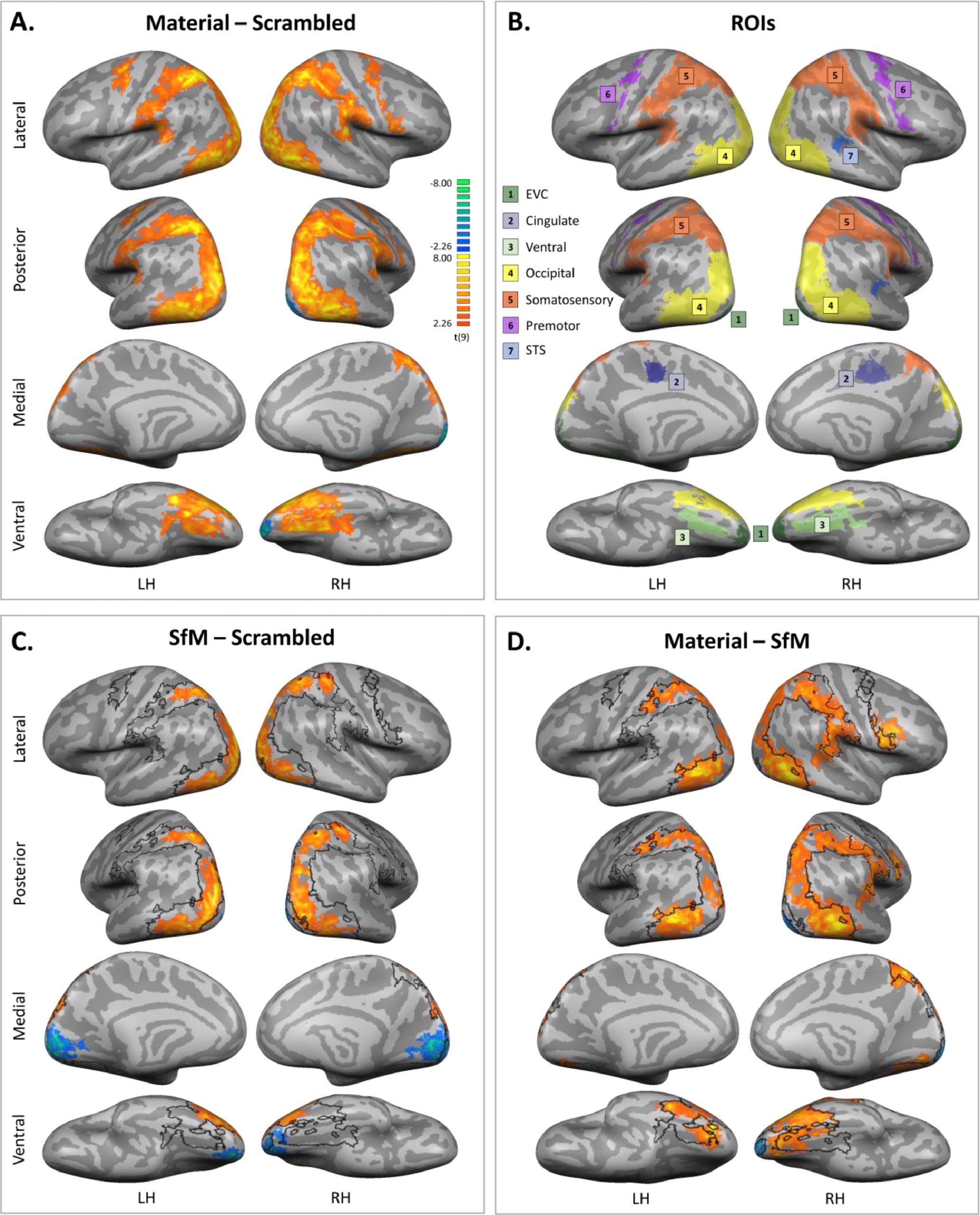Using dynamic dot displays, Schimid et al. show that a large network of brain regions respond to material motion. The dynamic dot displays are similar to those in biological motion studies, and they allow researchers to isolate motion cues from all other cues to material properties (e.g. surface reflectance). Interestingly, the areas that are found to respond to material motion in this study constitute a superset of those found to respond to biological motion in previous studies.
Abstract
There is growing research interest in the neural mechanisms underlying the recognition of material categories and properties. This research field, however, is relatively more recent and limited compared to investigations of the neural mechanisms underlying object and scene category recognition. Motion is particularly important for the perception of non-rigid materials, but the neural basis of non-rigid material motion remains unexplored. Using fMRI, we investigated which brain regions respond preferentially to material motion versus other types of motion. We introduce a new database of stimuli – dynamic dot materials – that are animations of moving dots that induce vivid percepts of various materials in motion, e.g. flapping cloth, liquid waves, wobbling jelly. Control stimuli were scrambled versions of these same animations and rigid three-dimensional rotating dots. Results showed that isolating material motion properties with dynamic dots (in contrast with other kinds of motion) activates a network of cortical regions in both ventral and dorsal visual pathways, including areas normally associated with the processing of surface properties and shape, and extending to somatosensory and premotor cortices. We suggest that such a widespread preference for material motion is due to strong associations between stimulus properties. For example viewing dots moving in a specific pattern not only elicits percepts of material motion; one perceives a flexible, non-rigid shape, identifies the object as a cloth flapping in the wind, infers the object’s weight under gravity, and anticipates how it would feel to reach out and touch the material. These results are a first important step in mapping out the cortical architecture and dynamics in material-related motion processing.
